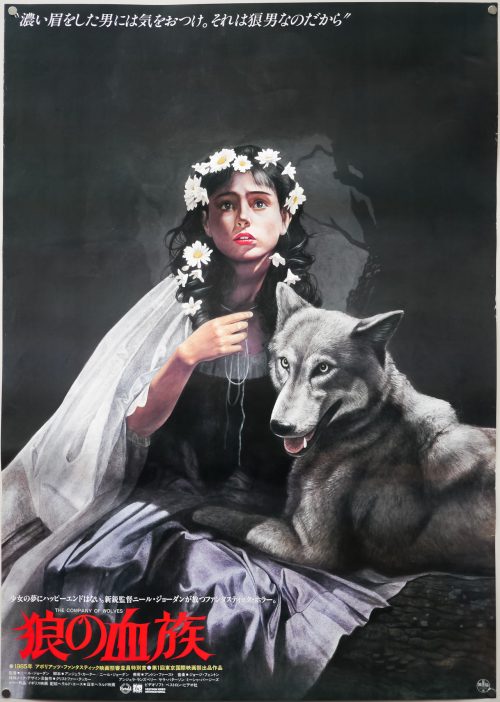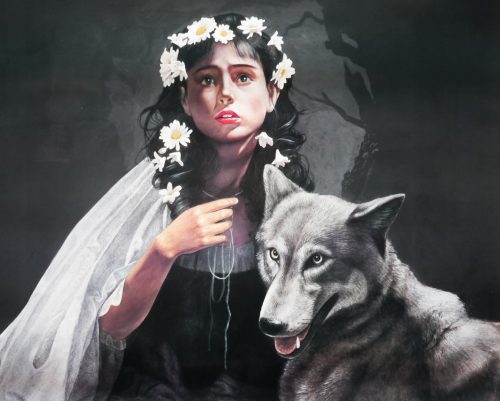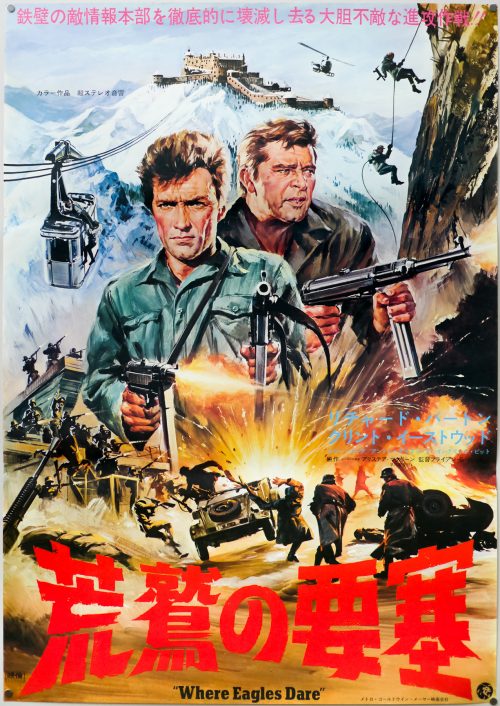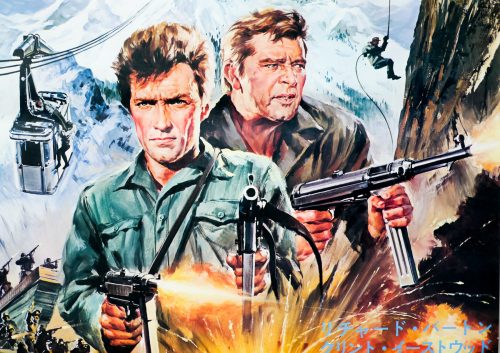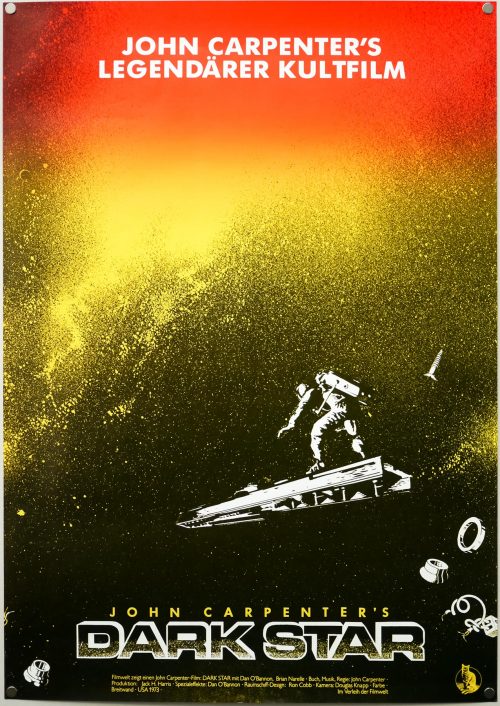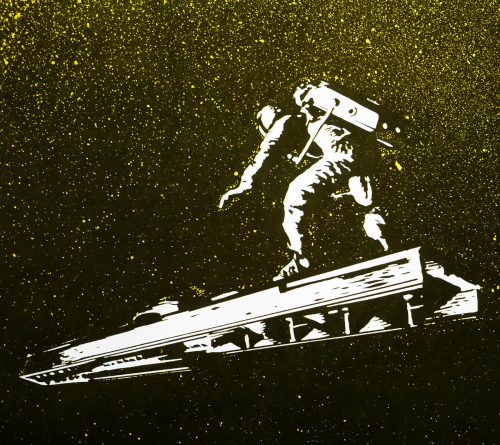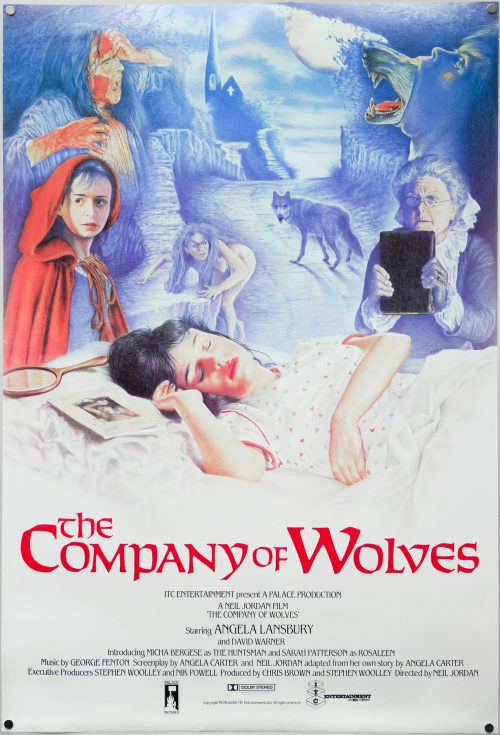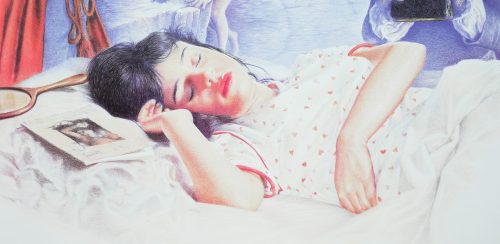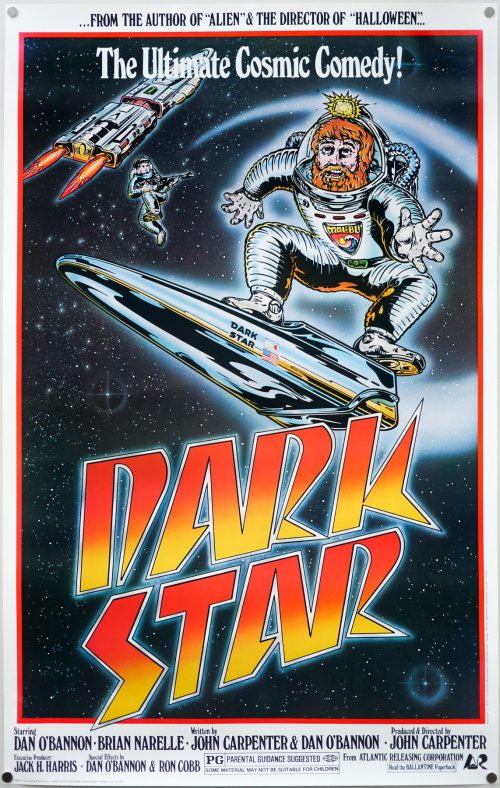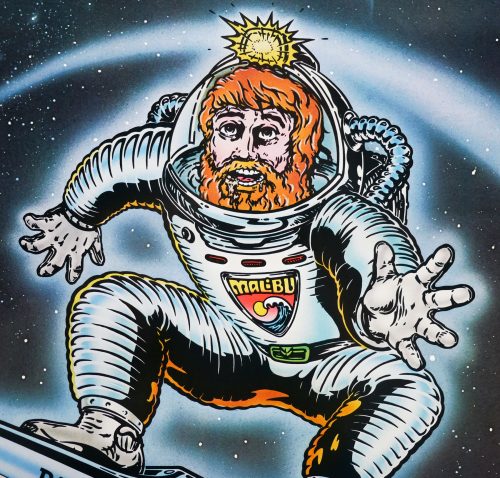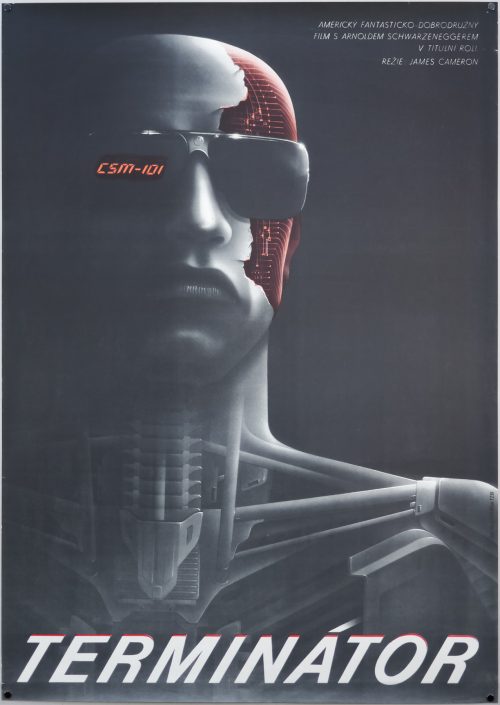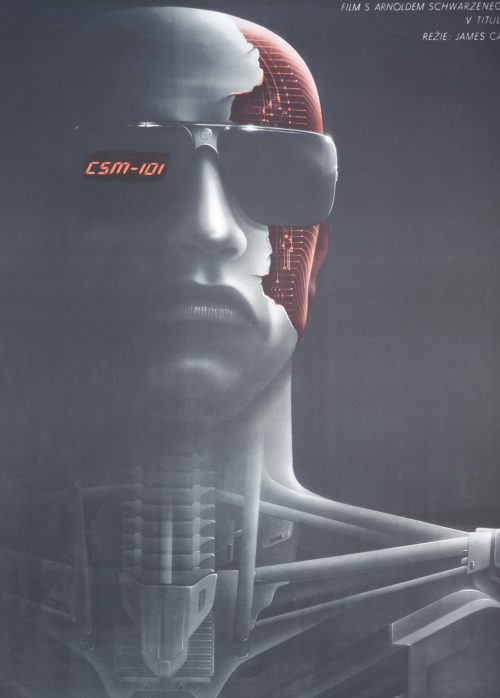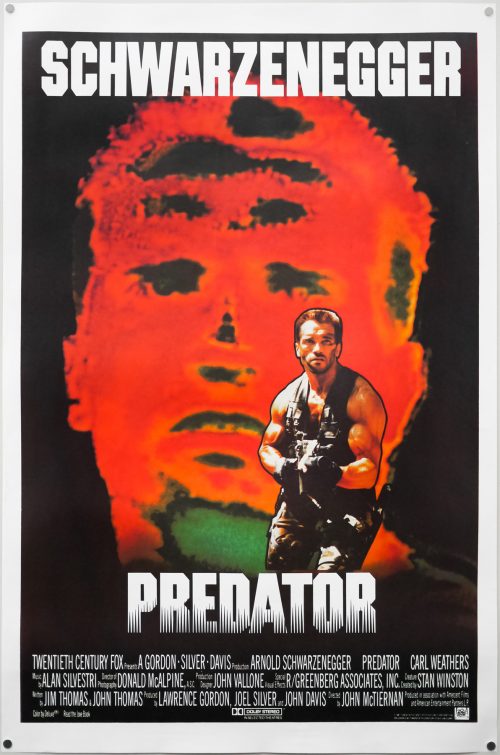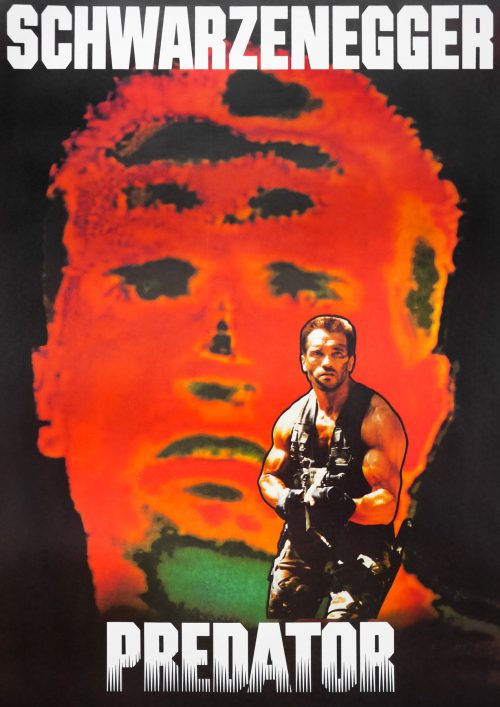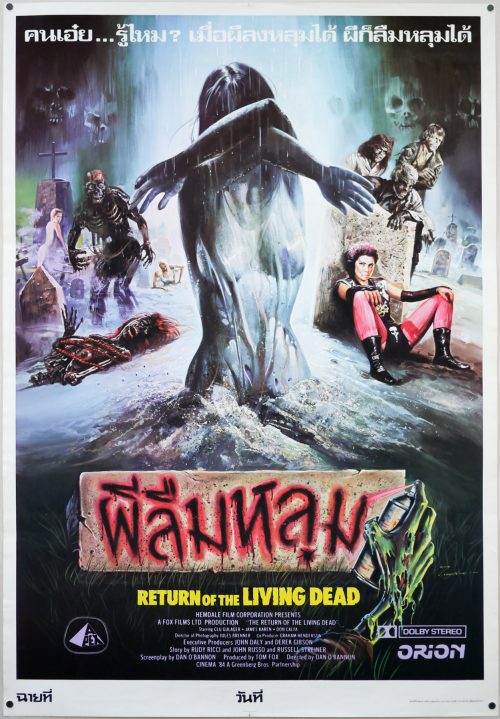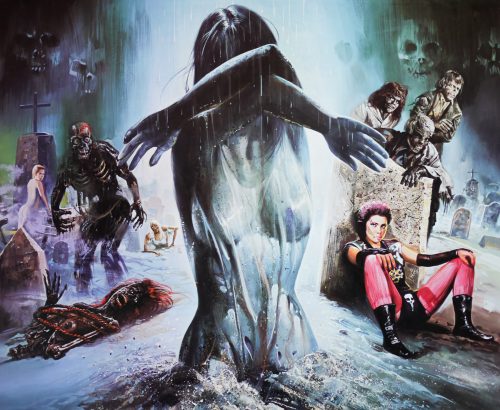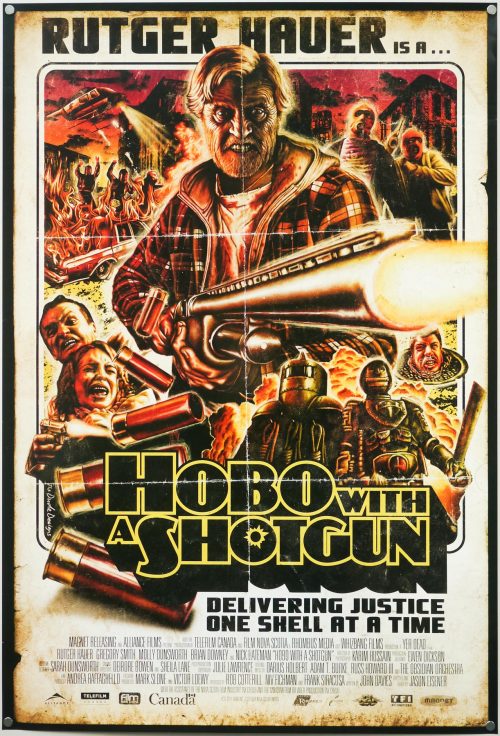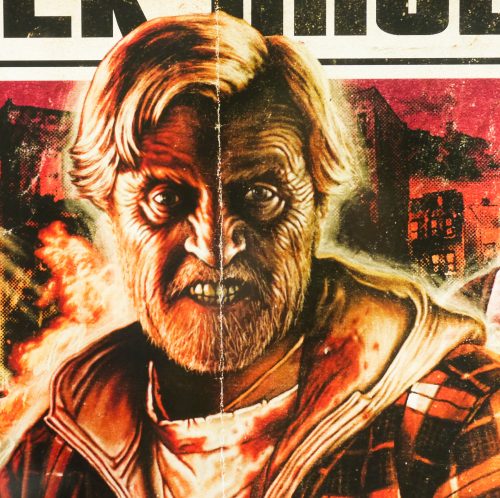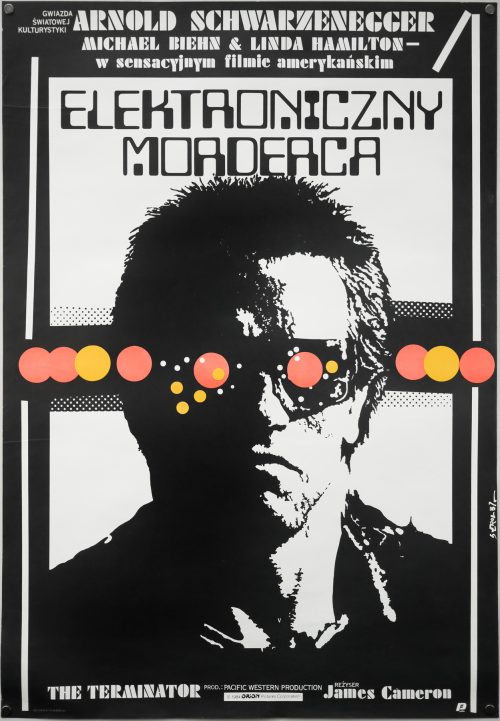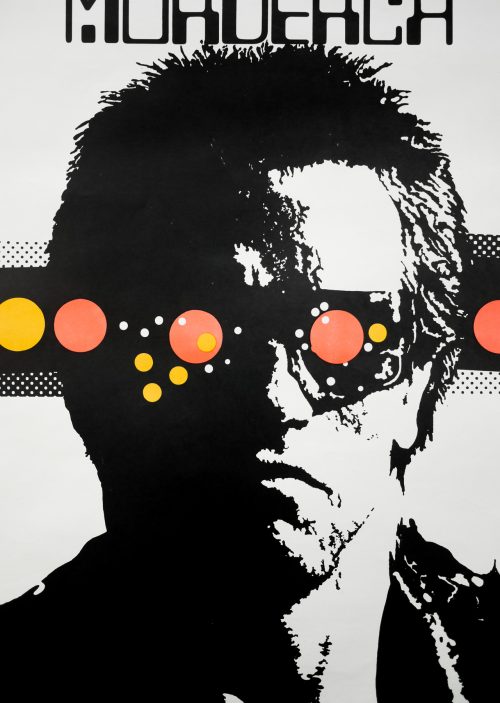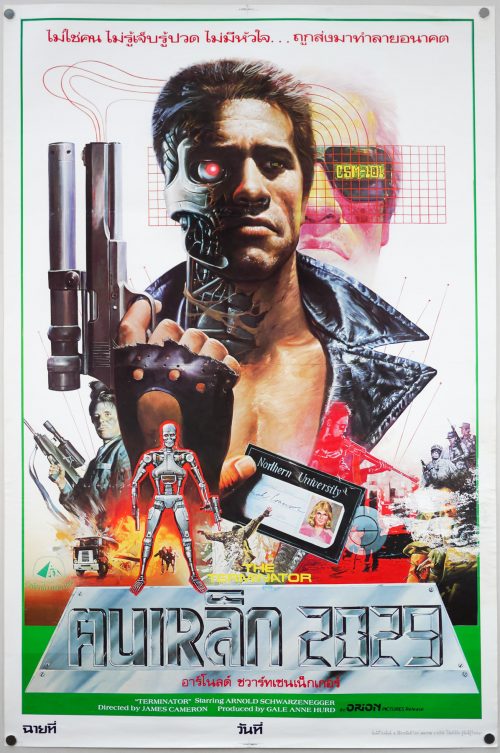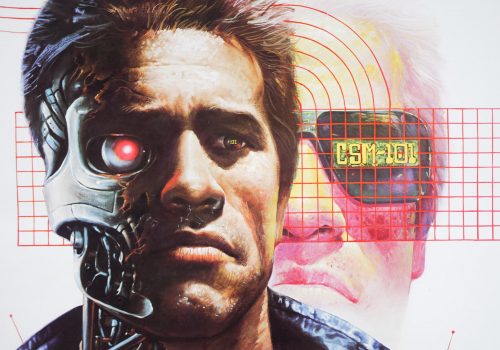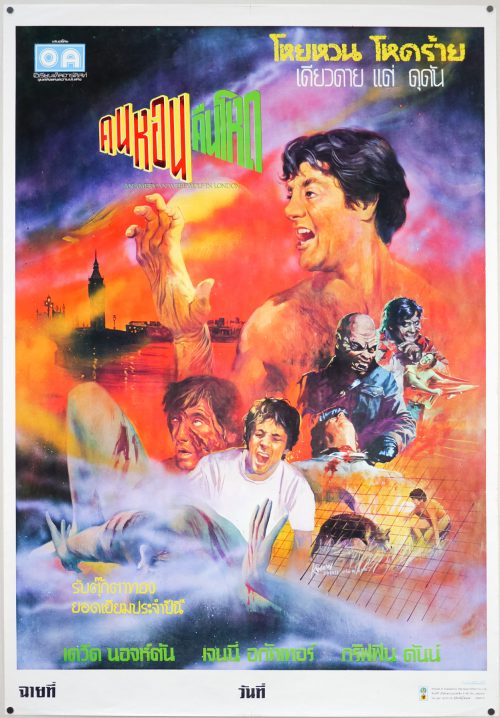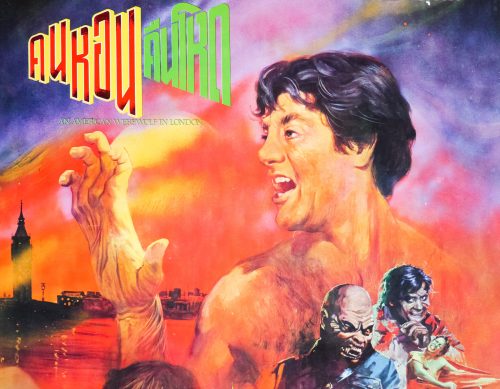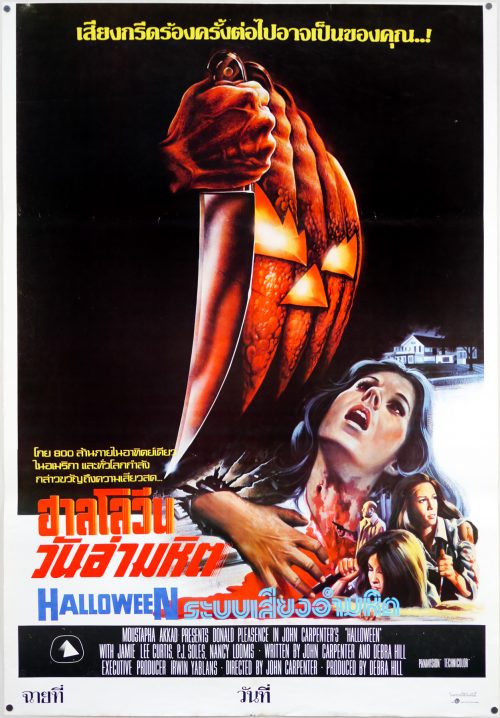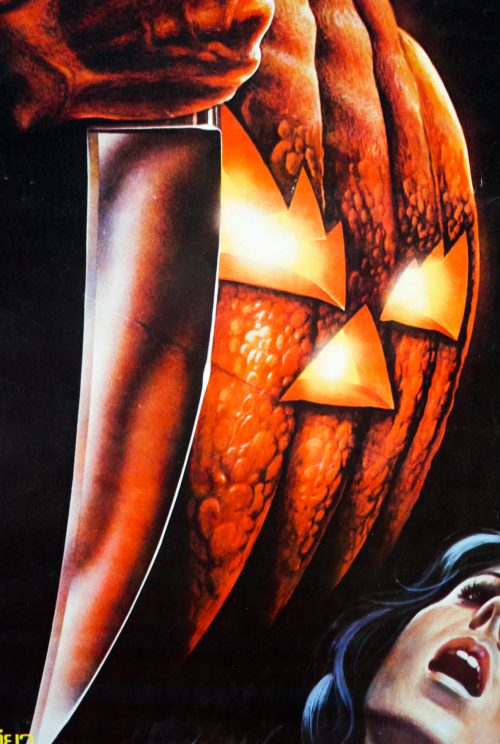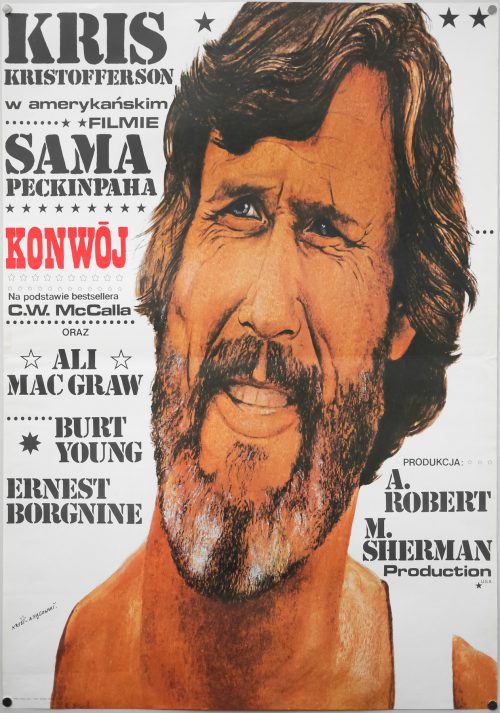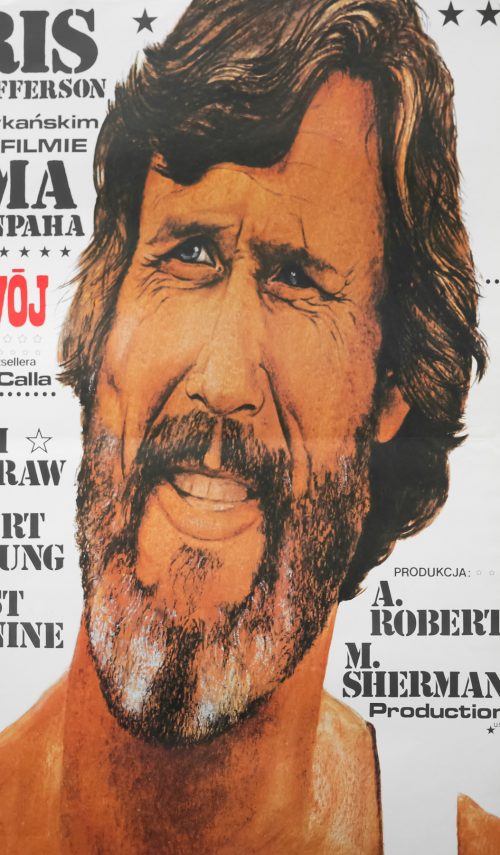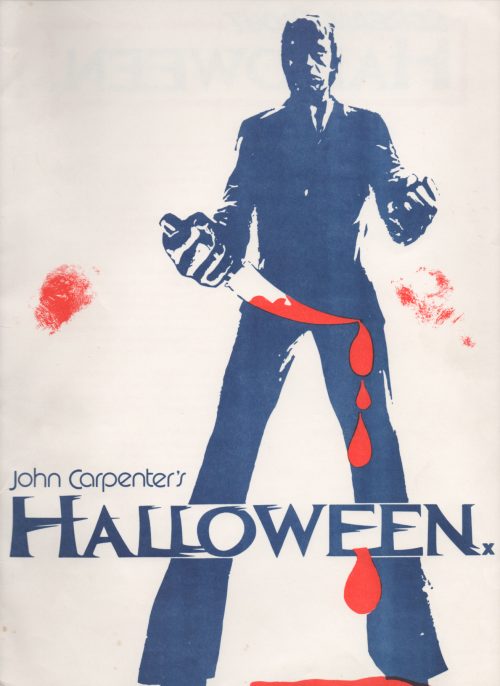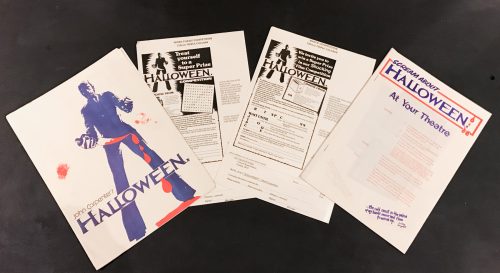- Title
- The Company Of Wolves
- AKA
- --
- Year of Film
- 1984
- Director
- Neil Jordan
- Starring
- Sarah Patterson, Angela Lansbury, David Warner, Tusse Silberg, Micha Bergese, Brian Glover, Graham Crowden, Kathryn Pogson, Stephen Rea, Georgia Slowe
- Origin of Film
- UK
- Genre(s) of Film
- Sarah Patterson, Angela Lansbury, David Warner, Tusse Silberg, Micha Bergese, Brian Glover, Graham Crowden, Kathryn Pogson, Stephen Rea, Georgia Slowe,
- Type of Poster
- B1
- Style of Poster
- Artwork
- Origin of Poster
- Japan
- Year of Poster
- 1985
- Designer
- Unknown
- Artist
- Sumio Tsunoda
- Size (inches)
- 28 14/16" x 40 2/16"
- SS or DS
- SS
- Tagline
- --
A joint collaboration between two British production companies, Palace Pictures and Lew Grade’s ITC Entertainment, The Company of Wolves was helmed by the Irish director Neil Jordan and based on a short story by the late English author Angela Carter, who also co-wrote the screenplay with Jordan. The film begins in the modern day with the lead character Rosaleen (played by first-time actress Sarah Patterson) having moved with her parents to a large house in a forest. At night Rosaleen falls asleep and has a vivid dream in which she is a medieval peasant girl who lives with her grandma (played by Murder, She Wrote’s Angela Lansbury) in a woodland village. Sitting by the fire one evening her grandma begins to tell her a story and what follows is a series of surreal, fantasy tales, with multiple narratives and narrators, most of which feature wolves or werewolves, and all of which are ripe with hidden meanings and deeper significances (check out this page on IMDb to give you an idea).
Featuring elements of the classic Little Red Riding Hood fairytale (and indeed the film features a blood red shawl worn by a young girl) the film is a parable of the loss of innocence and the beginning of adolescence and sexual awakening – as the Grandma says at one point ‘Never stray from the path, never eat a windfall apple and never trust a man whose eyebrows meet in the middle.’ Overcoming a slight budget The Company of Wolves has a dream-like, eerie atmosphere helped in no-small part by excellent production and costume design. There is also a werewolf transformation scene that challenges the famous one seen in American Werewolf in London. Palace Pictures would re-team several more times with Neil Jordan, including for Mona Lisa (1986) and Oscar-winning The Crying Game (1992)
The excellent illustration on this Japanese B1 poster is credited to the illustrator Sumio Tsunoda about whom I was able to discover next to nothing. A search revealed that this cyberpunk image can also be credited to him. If anyone knows any more details about the artist please get in touch or leave a comment.
